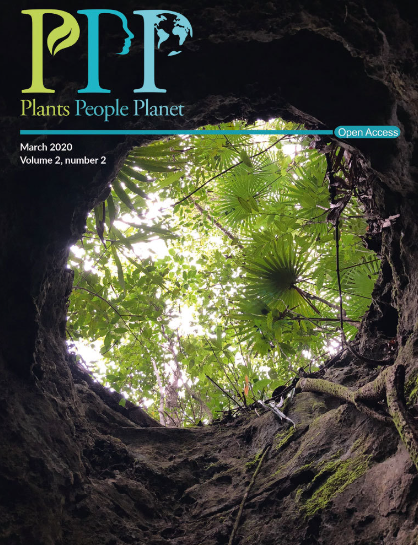Plant conservation assessment at scale: Rapid triage of extinction risks
IF 3.6
2区 环境科学与生态学
Q1 BIODIVERSITY CONSERVATION
引用次数: 0
Abstract
Societal Impact Statement The current rate of global biodiversity loss creates a pressing need to increase efficiency and throughput of extinction risk assessments in plants. We must assess as many plant species as possible, working with imperfect knowledge, to address the habitat loss and extinction threats of the Anthropocene. Using the biodiversity database, Botanical Information and Ecology Network (BIEN), and the Andropogoneae grass tribe as a case study, we demonstrate that large‐scale, preliminary conservation assessments can play a fundamental role in accelerating plant conservation pipelines and setting priorities for more in‐depth investigations. Summary The International Union for the Conservation of Nature (IUCN) Red List criteria are widely used to determine extinction risks of plant and animal life. Here, we used The Red List's criterion B, Geographic Range Size, to provide preliminary conservation assessments of the members of a large tribe of grasses, the Andropogoneae, with ~1100 species, including maize, sorghum, and sugarcane and their wild relatives. We used georeferenced occurrence data from the Botanical Information and Ecology Network (BIEN) and automated individual species assessments using ConR to demonstrate efficacy and accuracy in using time‐saving tools for conservation research. We validated our results with those from the IUCN‐recommended assessment tool, GeoCAT. We discovered a remarkably large gap in digitized information, with slightly more than 50% of the Andropogoneae lacking sufficient information for assessment. ConR and GeoCAT largely agree on which taxa are of least concern (>90%) or possibly threatened (<10%), highlighting that automating assessments with ConR is a viable strategy for preliminary conservation assessments of large plant groups. Results for crop wild relatives are similar to those for the entire dataset. Increasing digitization and collection needs to be a high priority. Available rapid assessment tools can then be used to identify species that warrant more comprehensive investigation.大规模植物保护评估:灭绝风险的快速分类
当前全球生物多样性丧失的速度迫切需要提高植物灭绝风险评估的效率和产量。我们必须利用不完善的知识,评估尽可能多的植物物种,以应对人类世的栖息地丧失和灭绝威胁。利用生物多样性数据库、植物信息与生态网络(BIEN)和Andropogoneae grass tribe为例,我们证明了大规模的初步保护评估可以在加速植物保护管道和为更深入的调查确定优先事项方面发挥基础性作用。国际自然保护联盟(IUCN)红色名录标准被广泛用于确定动植物的灭绝风险。在这里,我们使用红色名录的标准B,地理范围大小,提供了一个大部落的成员的初步保护评估,Andropogoneae,约1100种,包括玉米,高粱,甘蔗和它们的野生近缘种。我们使用来自植物信息和生态网络(BIEN)的地理参考发生数据和使用ConR的自动单个物种评估来证明使用节省时间的工具进行保护研究的有效性和准确性。我们用世界自然保护联盟推荐的评估工具GeoCAT验证了我们的结果。我们发现数字化信息的差距非常大,略多于50%的andropogonae缺乏足够的信息进行评估。ConR和GeoCAT在哪些分类群最不受关注(>90%)或可能受到威胁(<10%)的问题上基本一致,强调使用ConR进行自动化评估是大型植物类群初步保护评估的可行策略。作物野生近缘种的结果与整个数据集的结果相似。增加数字化和收集需要成为一个高度优先事项。然后可以使用现有的快速评估工具来确定需要进行更全面调查的物种。
本文章由计算机程序翻译,如有差异,请以英文原文为准。
求助全文
约1分钟内获得全文
求助全文
来源期刊

Plants People Planet
Multiple-
CiteScore
9.90
自引率
5.90%
发文量
81
审稿时长
12 weeks
期刊介绍:
Plants, People, Planet aims to publish outstanding research across the plant sciences, placing it firmly within the context of its wider relevance to people, society and the planet. We encourage scientists to consider carefully the potential impact of their research on people’s daily lives, on society, and on the world in which we live. We welcome submissions from all areas of plant sciences, from ecosystem studies to molecular genetics, and particularly encourage interdisciplinary studies, for instance within the social and medical sciences and chemistry and engineering.
 求助内容:
求助内容: 应助结果提醒方式:
应助结果提醒方式:


